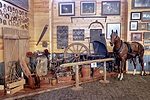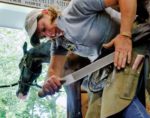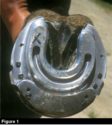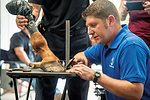Advertise Follow Us
American Farriers Journal
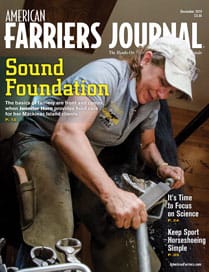
View Archived Issues
December 2019
Volume: 45
Edition: 8
American Farriers Journal is the “hands-on” magazine for professional farriers, equine veterinarians and horse care product and service buyers.
-
Table Of Contents
Table Of Contents
Shoeing For A LivingShoeing Mackinac Island’s Horses with Limited Resources
Michigan farrier Jennifer Horn applies sound principles to maintain driving and trail riding mountsRead MoreOpinionMechanical Considerations for Shoeing
Are we hindering performance horses, especially racing Thoroughbreds, by failing to consider the hoof and limb mechanics?Read MoreUsing Clips as Needed, Not as Trends Dictate, Will Enable Farriers to Improve a Horse’s Hoof-Health and Performance
Hoof proportion, digital alignment and capsule health should all be considered before deciding whether to use clips and which kindRead MoreOvercome 3 Obstacles of Shoeing Sport Horses
Assessing the rider and the horse are the keys to successRead MoreHow to Make an Open Toe Heart-Bar Shoe
Ohio farrier-veterinarian offers an option to support an acutely lame horseRead MoreEquine Reciprocating Systems: Connecting Tendon to Bone
The third installment of this series examines bone formation and its relationship to the muscle tendonRead MoreHorse Conformation Determines Best Trimming and Shoeing Approaches
Farriers should abandon one-size fits all solutions to navicularRead MoreResearch Journal: December 2019
The information, ideas and opinions expressed are those of the author and do not necessarily represent those of the United States Department of Agriculture.Read More -
Featured Articles
Featured Articles
Shoeing For A LivingShoeing Mackinac Island’s Horses with Limited Resources
Michigan farrier Jennifer Horn applies sound principles to maintain driving and trail riding mountsRead MoreUsing Clips as Needed, Not as Trends Dictate, Will Enable Farriers to Improve a Horse’s Hoof-Health and Performance
Hoof proportion, digital alignment and capsule health should all be considered before deciding whether to use clips and which kindRead MoreEquine Reciprocating Systems: Connecting Tendon to Bone
The third installment of this series examines bone formation and its relationship to the muscle tendonRead More - Digital Edition
-
Online Extras
Online Extras

